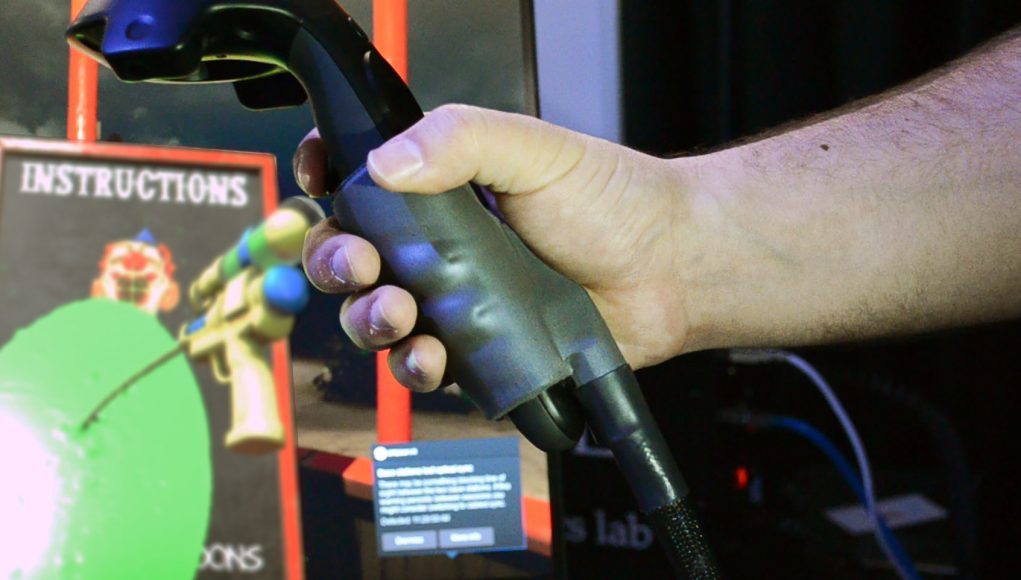Omnipulse is a new haptic technology out of Cornell’s Organic Robotics Lab which uses an array of embedded pneumatic actuators to create haptic feedback which feels quite ‘organic’ compared to the more ‘mechanical’ of many other haptic technologies out there. With the ability to form the flexible Omnipulse skin into arbitrary shapes, the technology could be integrated into VR controllers, gloves, or potentially even haptic VR suits.
Showing off their technology at GTC 2017 this week, the Organic Robotics Lab has been collaborating with NVIDIA to create compelling haptic feedback with a version of the Omnipulse skin which was adapted to a Vive controller. Running inside of Nvidia’s VR Funhouse demo, the lab showed the haptic system being used to convey sensations of gun recoil, hitting a hammer against objects, punching objects, and shooting a squirt gun.
The prototype haptic skin is shaped to conform to the controller and simply slides over top of the existing structure. From there it’s attached to a tether which, at this stage, contains one pneumatic tube per pulsating pocket (currently 12), though the creators tell me there are a number of ways to simplify the tether. The tether runs to a compressor which pressurizes air for use in inflating the various actuators; compressed gas like C02 could also be used for a system that wouldn’t need to rely on a powered compressor.
The sleeve itself feels like a piece of thick rubber, with a consistency similar to your own skin; combined with the roundness of the inflating pockets, the whole ordeal feels quite a bit more squishy and organic than many other haptics technologies we’ve used for VR. When you see it active on the controller when it isn’t in anyone’s hand, squirming and shaking the controller at times, it’s actually a little creepy how it seems… alive.
But that doesn’t mean it can only provide organic-feeling feedback. Actually the creators say it’s capable of applying a hearty 15 PSI against your hand (provided you keep a firm grip), which means it can push quite hard against your hand. I was surprised to find that the response time was fast enough to create a compelling feeling of the kick of a gun in my hand when I tried the demo.
When it comes to haptics, pneumatics are not new to the scene; we’ve seen it used in gun peripherals, haptic vests, and more in years past. What’s interesting about Omnipulse is the ability to integrate many pneumatic actuators within a tight space, and control them all independently from one another. This means more ‘haptic resolution’, and the ability to create more advanced haptic effects.
The creators of Omnipulse tell me that this is a very early prototype, and what I saw and felt was just a preliminary set of haptic effects in one potential form factor. There’s still lots of exploration to do with regard to figuring out how to pulsate the actuator array in ways that create the most compelling haptic sensations that feel like a good analog for what the user is experiencing in VR. And further out, the company plans to experiment with different form factors, saying that the skins can be molded in arbitrary shapes, with the possibility to be made into gloves and even haptic suits.
Road to VR is a proud media sponsor of GTC 2017.







